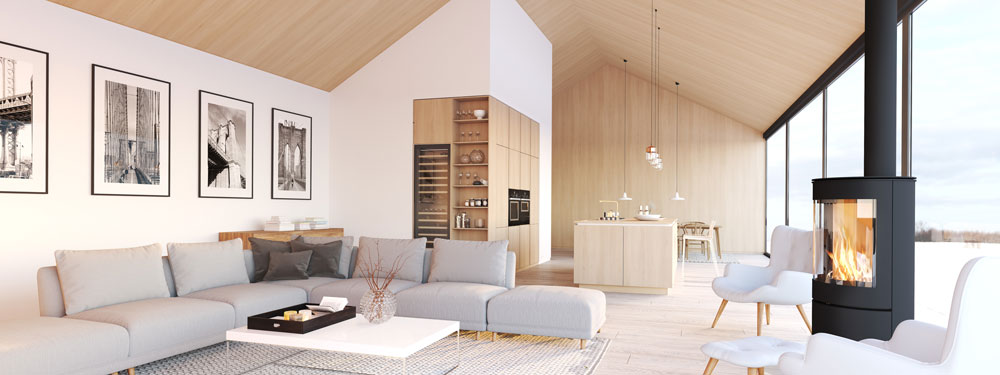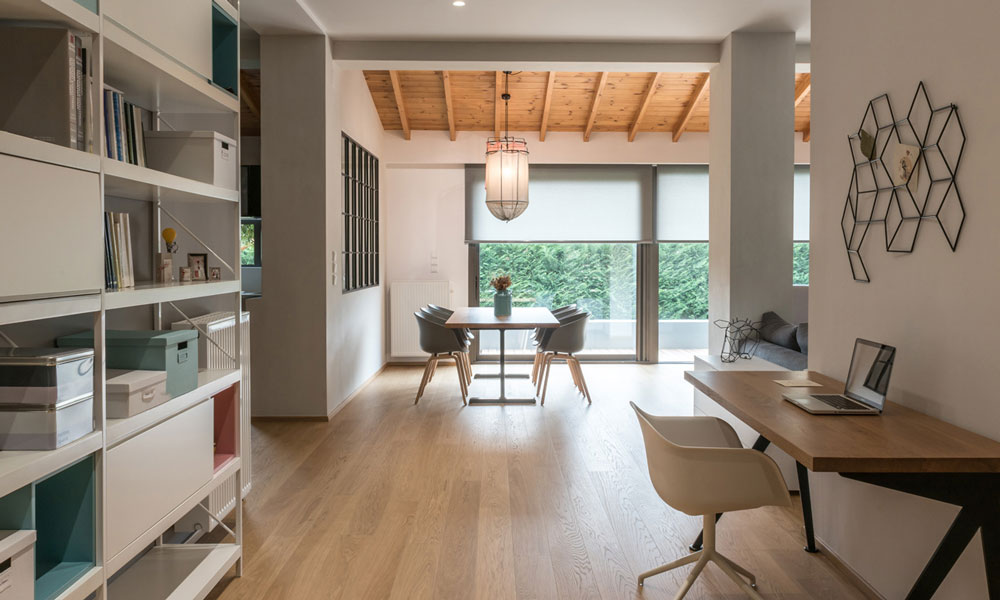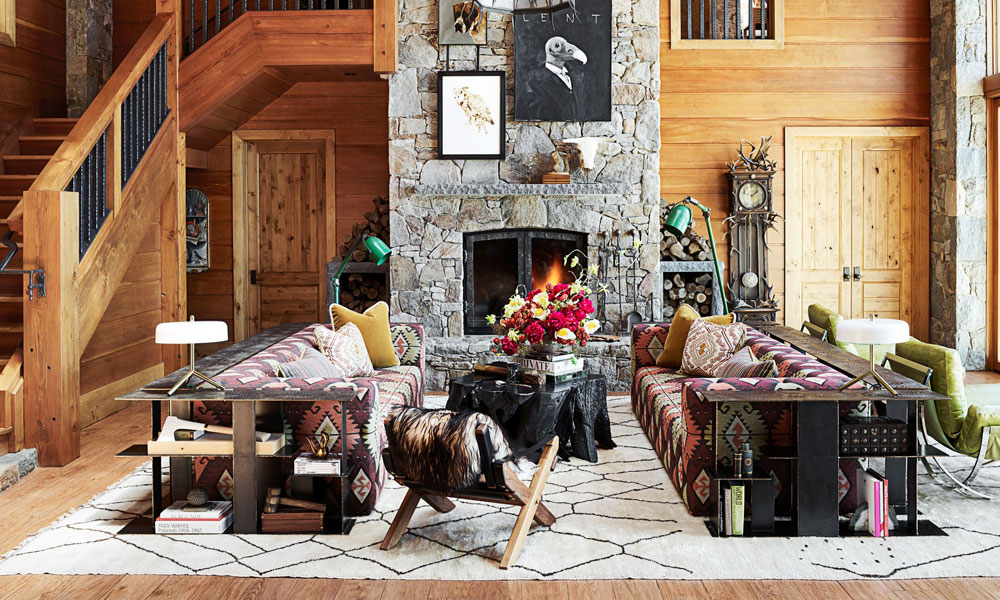With so many unique styles — industrial, bohemian, shabby chic — it can be overwhelming to determine which style will work best for your space.
A basic understanding of the fundamental styles can inspire you with visions of your future home and provide the building blocks you need for creating your own personal aesthetic.
If you need help learning the key aspects of each style design and how they differ, we’ve got you covered. We’ve compiled a guide explaining 16 of the most popular interior design styles and how to incorporate them into your home.
1. Modern

A clean, modern home with subtle colour tones.
Modern is a broad design term that typically refers to homes featuring clean lines and minimal clutter. It is based on a design movement that appeared around the turn of the 20th century.
Key Elements:
- Emphasis on squared, graphic, crisp lines
- Simple colour palette featuring neutral or earthy tones
- Metal, steel, and glass elements (for more glass decor inspiration, check out Ausglass Fencing)
- Simplistic furniture and decor
- Sleek, minimal accessories
- Celebration of natural light
- Minimal clutter
- Natural materials
Modern design conveys a sense of simplicity in all elements, including any furniture. Modern style is most often described as sleek, thanks to the elimination of unnecessary details.
2. Contemporary
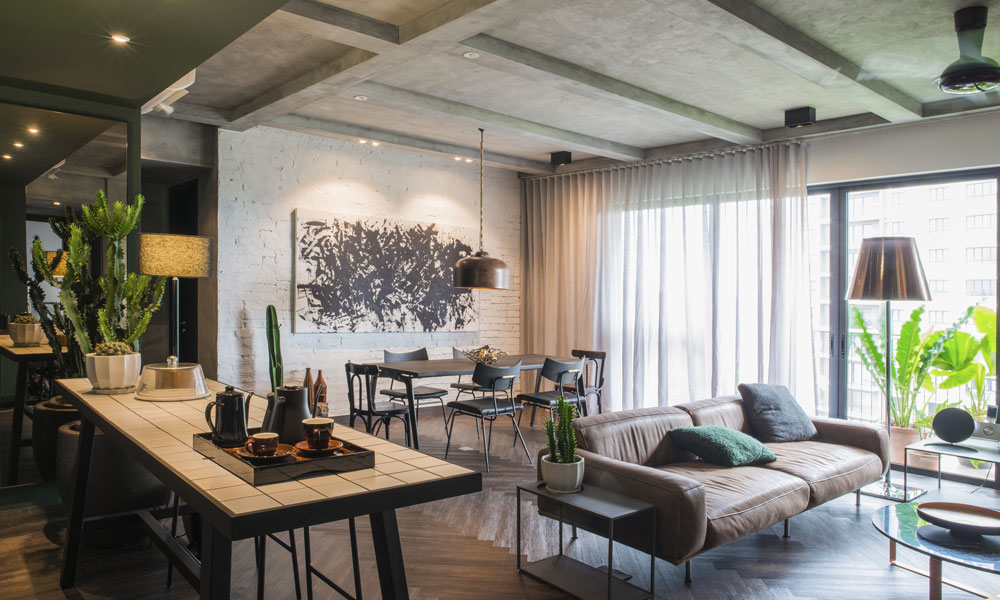
A contemporary design theme is ideal for a range of homes and businesses.
Contemporary and modern styles are often used interchangeably since some of their attributes overlap. However, there are clear distinctions between the two.
The main difference can be found in modern’s strict interpretation of 20th-century design. Alternatively, contemporary design adheres less to one particular style and focuses more on the current moment.
Key Elements:
- Softened, rounded lines
- Heavy reliance on brown, taupe, cream, and white, with an occasinoal pop of colour in the form of a rug or an accent wall
- Natural details
- High ceilings
- Open floor plan
- Wood flooring is preferred, but cement, laminate, or stone can be incorporated as well
- Natural accents
- Large windows
Contemporary design also tends to have more freedom than modern design. For example, curved lines may show up in contemporary styles but would not be found in modern designs.
3. Minimalist
The minimalist design concept is especially popular here in Australia. It takes the vibe of modern design and simplifies it even further.
Think refinement, simplicity, luxury, functionality, and comfort.
Key Elements:
- Streamlined furniture
- Neutral colour palettes
- Ultra clean lines
- Negative space
- Functionality
- Minimal fussiness and clutter
- Large, vivid photography
When thinking of minimalism, consider a museum or modern art gallery as a reference. Museums and galleries manage to fill entire spaces with just the barest of essentials while still creating an interesting sense of drama and impact.
While some people tend to confuse minimalistic style with a stark, harsh, cold feel, the right accessories and paint colours with warm undertones can add a much-needed hint of warmth.
4. Industrial

An industrial look is ideal for a range of lofts, apartments and townhouses.
As implied by the name, industrial styles pull inspiration from settings such as urban lofts and warehouses. This style lends a sense of rawness along with an unfinished element to spaces.
The outcome is a masculine, rustic, mature space with ample visual interest.
Key Elements:
- Exposed brick or ductwork
- High ceilings
- Dangling metal light fixtures
- Minimal furniture
- Distressed timber
- Moody hues
- Unfinished materials
- Reclaimed machinery
- Rustic finishes
- Copper tone accents
Aside from one or two pieces of photography or abstract art, the colour scheme is usually neutral, with colours derived from the surrounding wood or metal materials.
This style is best for larger spaces as it calls for ample breathing room to accommodate the often oversized elements.
To inject a small dose of industrial design into a limited space, consider interesting items such as a raw metal bookshelf.
5. Mid-Century Modern
Mid-century modern is a throwback to the mid-1900s, a period that produced some of modern design’s most iconic pieces. There is a retro nostalgia found in Mid-Century Modern Design, along with minimalistic elements.
It makes an ideal complement to almost any interior and also helps create a cohesiveness between the interior and exterior.
Key Elements:
- Refined lines
- Neutral colours
- Organic shapes (i.e. “egg-shaped” chairs)
- Minimalist, straight-forward silhouettes
- Versatile pieces
- Quiet fabrications
- Emphasis on functionality
Overall, this design style creates a diverse, rich interior environment that works with just about any home. As far as design styles go, this one is about as fail-proof as they come.
6. Scandanavian
An off-shoot of mid-century modern design, Scandanavian design draws inspiration from the simplistic appeal of life in Nordic countries. Scandinavian furniture, while understated and simple, often doubles as a work of art.
Key Elements:
- All-white colour palettes or white and gray colour palettes
- Natural elements such as bright plastics, form-pressed wood, enameled aluminum, and steel and wide plank flooring
- Subtle yet playful pops of colour from natural fibre throws, a single piece of furniture, or a work of art
- Natural, spacious lighting
- Fluid lines
- Gentle contours
- Minimal accessories
- Focus on object proportions
- Functional, yet interesting, furniture pieces
Increasingly popular, Scandinavian design creates a serene simplicity that proves universal in its appeal. Its relaxed atmosphere is fully functional and one of the easiest designs to master.
7. Traditional
In terms of interior design, almost every style takes cues from traditional design ideas. Rooted in European sensibilities, this style offers depth, layers, and dimensions that create appealing visual interest.
Key Elements:
- Elaborate fabrics such as silk, brocade, and velvet
- A variety of textures
- Sumptuous furnishings
- Abundant accessories
- Curved lines
- Classic details
- Dark, finished wood
- Rich colour palettes
There is depth, layering and dimensionality within most traditional designs. You can make traditional style your own by incorporating elements that speak to your personality and make a statement.
8. Transitional
Borrowing from both modern and traditional design, transitional is a popular style. It creates an appealing, unexpected space that is just the right balance of styles.
Key Elements:
- Modern materials such as glass and steel complemented by plush furnishings
- Neutral colour palette
- Traditional furnishings mixed with modern elements
Its mix of styles creates a calm, relaxed space that is warm and inviting while also feeling stylish and sleek.
This style is particularly helpful if you are trying to mesh interior design styles after moving into a larger home or getting married.
9. French Country
Similar to transitional and modern interior design styles, French Country is a hybridized mix of shabby chic, farmhouse interior, and antique French design elements.
Packed with sophisticated allure, this style strikes the perfect balance of comfort and beauty.
Key Elements:
- Warm, earthy colours such as soft tones of yellow, gold, or red
- Worn wooden furnishing
- Farmhouse inspired accents
- Natural materials such as brick and stone
- Collections of heavy linens, bed coverings, or porcelain dishes
- Eclectic mixes of art pieces
French Country style easily fits into both elegant and country homes alike. The noteworthy accents, soft patterns, and soothing hues of this style bring forth a warm, welcoming atmosphere.
10. Bohemian
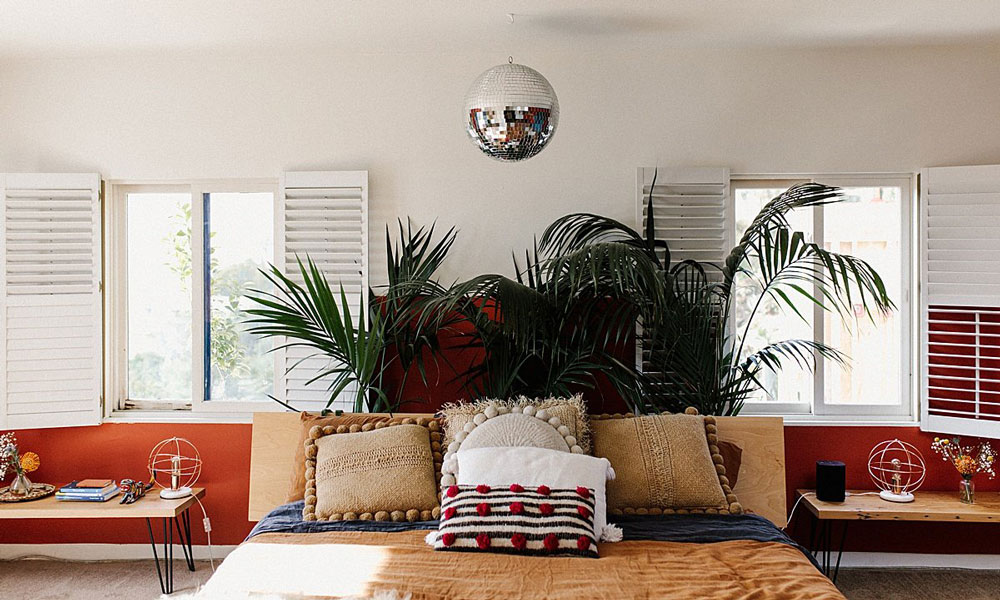
Source: https://pampa.com.au/blogs/journal/mi-casa-nat-kelley
Bohemian is an endlessly popular, timeless design, beloved in both fashion and home design. This eclectic style conveys a carefree vibe that reflects an adventurous, follow-your-heart lifestyle.
Key Elements:
- Vintage furniture and light fixtures
- Globally inspired rugs and textiles
- Collections of flea market items or decor obtained from traveling
- Floor pillows or comfortable seating spaces
- Unique accents
- Exotic vintage finds
- Vibrant patterns and rich colours such as jewel tones, purples, and reds
- Beaded fabrics
This eclectic style can incorporate a wide mix of elements and still pull it off. Think a glamorous chandelier paired with a mid-century chair and a vibrant colour palette.
Essentially, anything goes when it comes to this style. The only real rule behind Bohemian design is to make sure you love it.
11. Eclectic
Similar to bohemian décor but with a more sophisticated allure, eclectic design encompasses a variety of periods and styles. It is important to focus on unifying aspects to avoid creating a space that is chaotic or scattered.
Key Elements:
- Mixed textures (i.e. shaggy throw rugs, smooth metal, and rough wood furnishings)
- Carefully chosen negative space
- Variety of fabrics
- Neutral colour palette with unifying pops of colour
At its core, eclectic design is an ideal mix of consistency and creative freedom. This can be one of the trickier design styles to pull off. An in-depth guide to eclectic style can help you successfully incorporate this design into your home.
12. Rustic
Do you have to live in a log cabin to have rustic decor? No! This warm, inviting, cosy style can fit in just about any home.
Rustic design — a mix of farmhouse and industrial styles — draws from natural inspiration, incorporating unfinished, weathered, raw elements such as stone, leather and wood.
Key Elements
- Outdoor accessories and natural design elements (i.e. reclaimed wood floors or vaulted ceilings with wood beams)
- Neutral colour palette along with simple, earthy colours such as warm shades of green, brown, yellow, and gray
- Wood flooring
- Rich, dark stained wood tones
- Indoor plants and decorative foliage
- Heavy wood furniture or leather furniture
- Woven baskets, rugs, and textiles
For tips on pulling the outside in, this article outlining rustic style will answer all your questions.
13. Shabby Chic
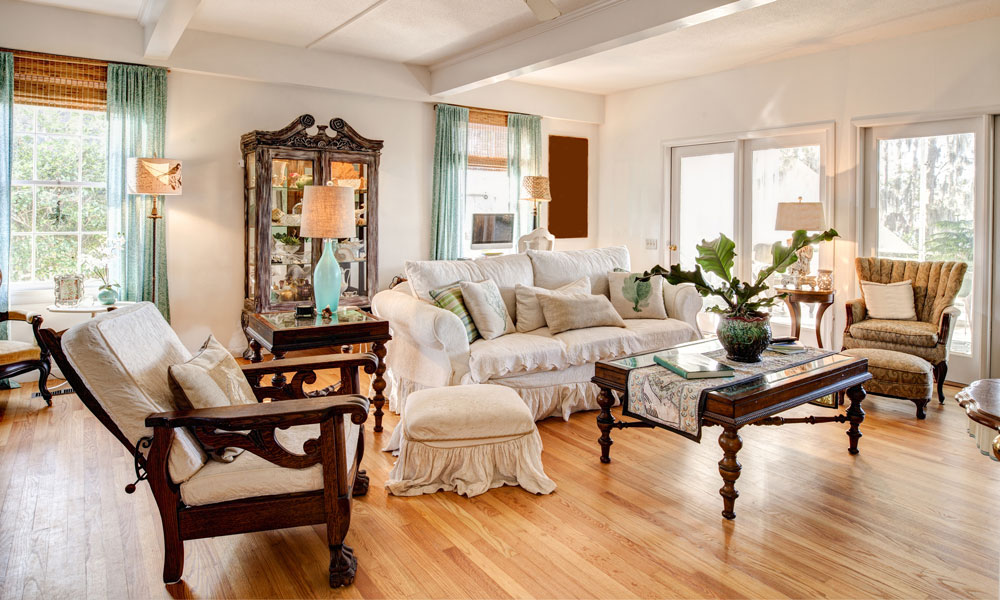
With roots in vintage and antique French design, shabby chic brings forth a timeless appeal.
Shabby chic shares similarities to Bohemian and other design styles, but this vintage-inspired style is generally more delicate, soft, and feminine.
Key Elements:
- White, cream, and pastel colour palette
- Ornate wall hangings and light fixtures
- Furniture that is distressed (or appears to be)
- Vintage finds
Shabby chic design boasts a comfortable, lived-in, vintage-inspired appeal.
14. Nautical
Nautical decor — also referred to as cottage or coastal decor — reflects the spirit of New England beach homes. The finished result is a warm, positive atmosphere that lends itself to relaxation and peace.
Key Elements:
- White or sand colour tones as the foundation
- Blue is the most common accent colour
- Unfinished wood accents
- Chic linen upholstery
- Decorative accents featuring sailboats, jute ropes, rowing oars, navigational maps, seashells, sand in clear jars, and more
This style is ideal for beach and nature lovers who wish to bring the outdoors in. It is hard to beat the bright, airy, uplifting atmosphere created by this popular design style.
15. Coastal / Hamptons
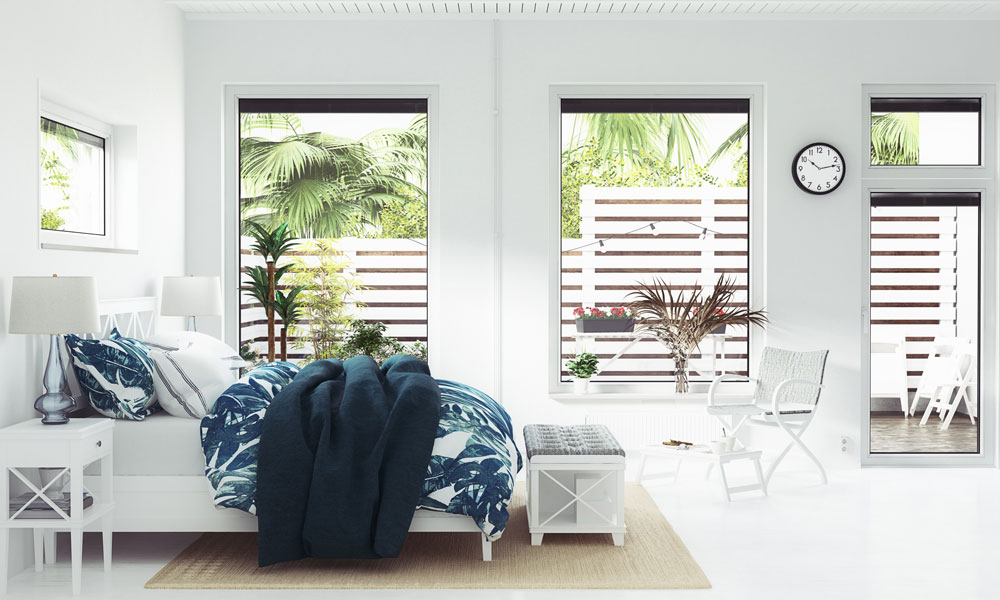
The Coastal/Hamptons style features beach and ocean inspired designs.
Coastal style, also known as Hamptons style, hails from iconic United States beaches. The intention of this design lies in creating a beach/ocean-inspired vibe.
Key Elements:
- Airy, neutral colour palettes with shades of greens and blues inspired by the ocean
- White or beige furnishings
- Wood accessories
- Sea-inspired decor
- Blue and white striped patterns for sofas, pillows, and linens
- Large windows
- Painted white wood
The result of coastal design is a relaxed, elegant finish that creates an inviting home with a peaceful atmosphere.
16. Farmhouse
Farmhouse decor is a modern take on cabin-inspired interior designs. With some traditional and transitional elements mixed in, farmhouse design offers a relaxed, yet pulled together approach.
Key Elements:
- Distressed wood and upholstered linen furniture
- Mostly white and beige colour palette
- Typically turqoise or light yellow for accent colours, although any bright colour can be used to add a pop of interest
- A mix of old and new accents
- Rustic country elements such as exposed beams
If comfort, warmth, and practicality are your goals, farmhouse style might be a great design choice to consider. If you are looking for more tips on “How to Decorate a Room in Farmhouse Style”, we love this helpful article on farmhouse-style room decoration.
Which Flooring Goes With My Interior Design Style?
When planning your interior design style, flooring plays an important role.
For example, solid timber would be especially beautiful in homes featuring contemporary or rustic styles. With their focus on natural materials, contemporary and rustic styles are the perfect designs for utilizing timber floors.
For coastal or nautical design styles — especially if you actually live on the beach — engineered timber or vinyl planks can be both beautiful and functional options. Whereas real timber can be stunning when incorporated into these designs, it is important to have flooring that stands up to the wear and tear — sand, humidity, moisture — of beach living).
For more details on which flooring would go best with your chosen design style, please do not hesitate to contact our team at The Online Flooring Store.
Final Thoughts
We hope our guide to the most popular interior design styles helps get you started planning your future project.
We would be glad to help you find the right flooring to match your design preferences. If you have any questions, our experts at The Online Flooring Store are always here to help.
Frequently Asked Questions
Most modern homes blend multiple styles rather than strictly following one. Create a Pinterest board of rooms you love, then look for patterns. Do you consistently save images with clean lines, natural materials, or specific colour palettes? Consider transitional or eclectic styles if you're drawn to multiple aesthetics. Remember that your home should reflect your personality, not fit perfectly into one category.
Engineered timber and luxury vinyl planks are the most versatile flooring options across design styles. Both work beautifully with virtually any aesthetic from Scandinavian to Industrial to Hamptons.
For modern and minimalist styles, choose lighter tones with minimal grain. Opt for warmer tones with more character for traditional, rustic or farmhouse. When in doubt, medium-toned oak finishes are universally adaptable to style changes.
Start with more minor, high-impact changes rather than overhauling everything. Add light wood accents, remove clutter, and incorporate textural elements like wool throws for Scandinavian style. For industrial use, introduce metal light fixtures or shelving. For Coastal/Hamptons style, incorporate blue and white textiles and natural materials. Paint is another powerful, relatively inexpensive way to shift your style; white walls work with most contemporary styles.
Minimalist, Scandinavian and Contemporary styles work exceptionally well in small spaces. These styles emphasize clean lines, negative space, and functional furniture that doesn't overwhelm the room. Avoid heavily ornate Traditional or French Country styles, making small spaces feel cluttered. In tight quarters, choose lighter colour palettes, incorporate mirrors to create the illusion of space, and select furniture with exposed legs to create a sense of openness.


